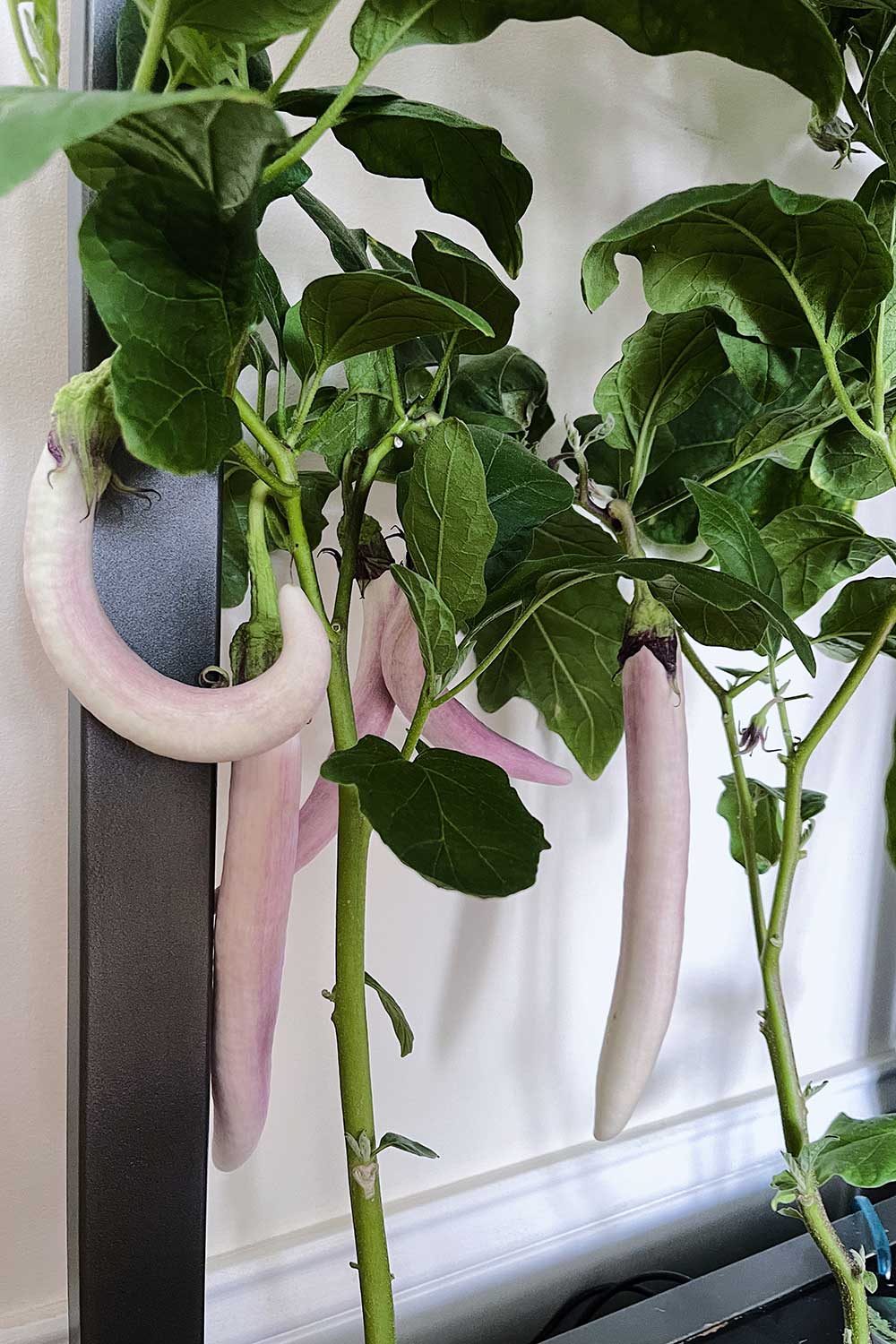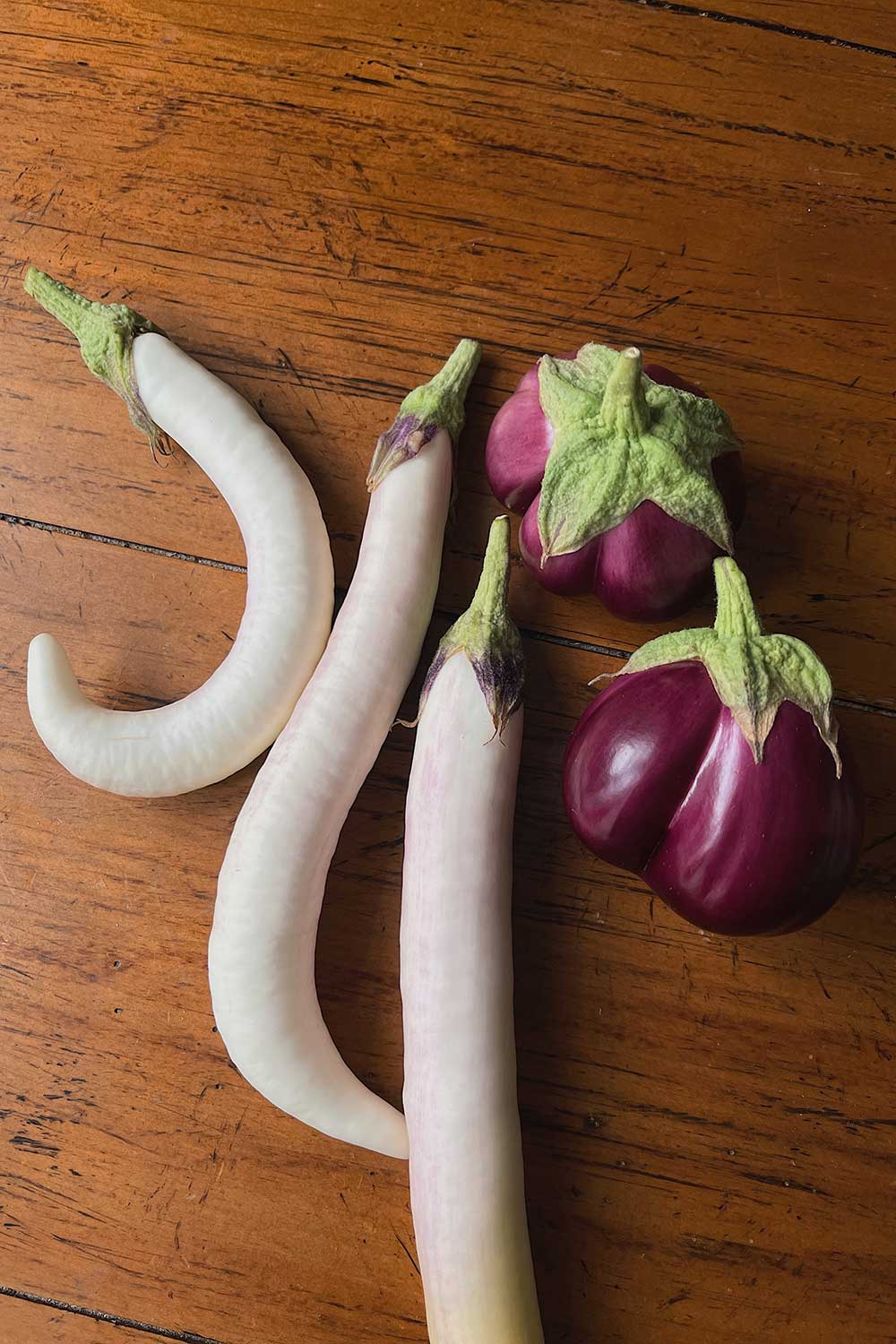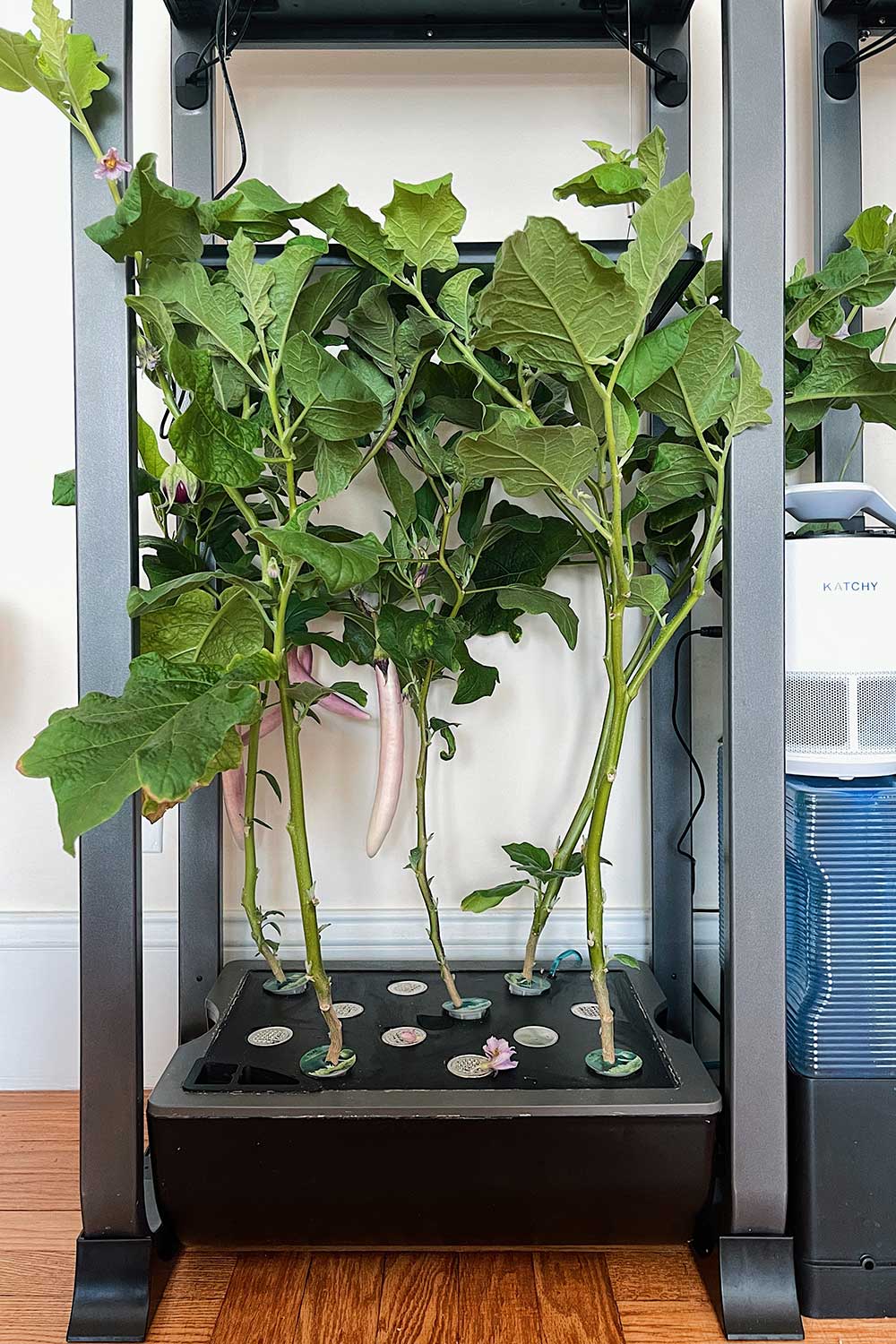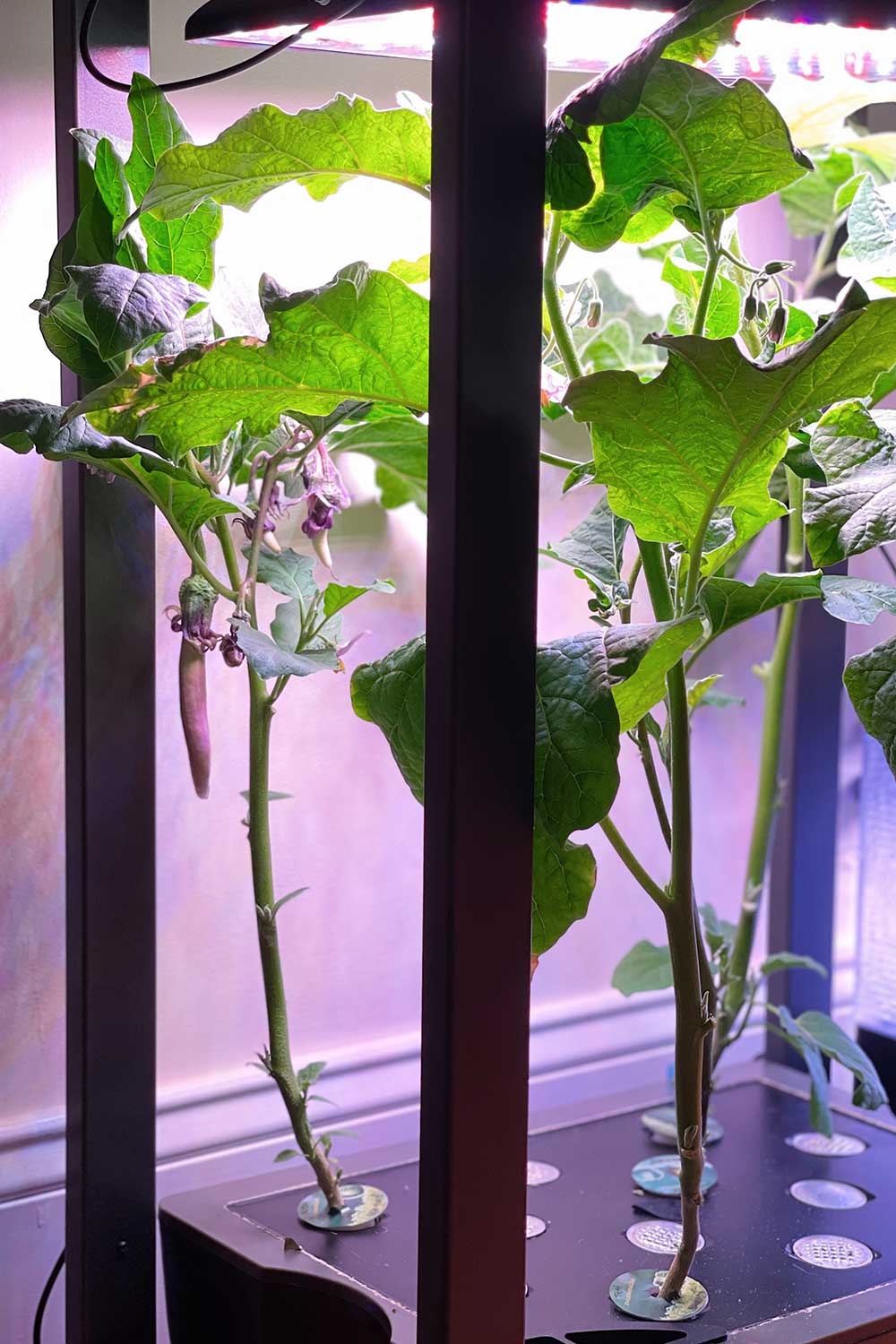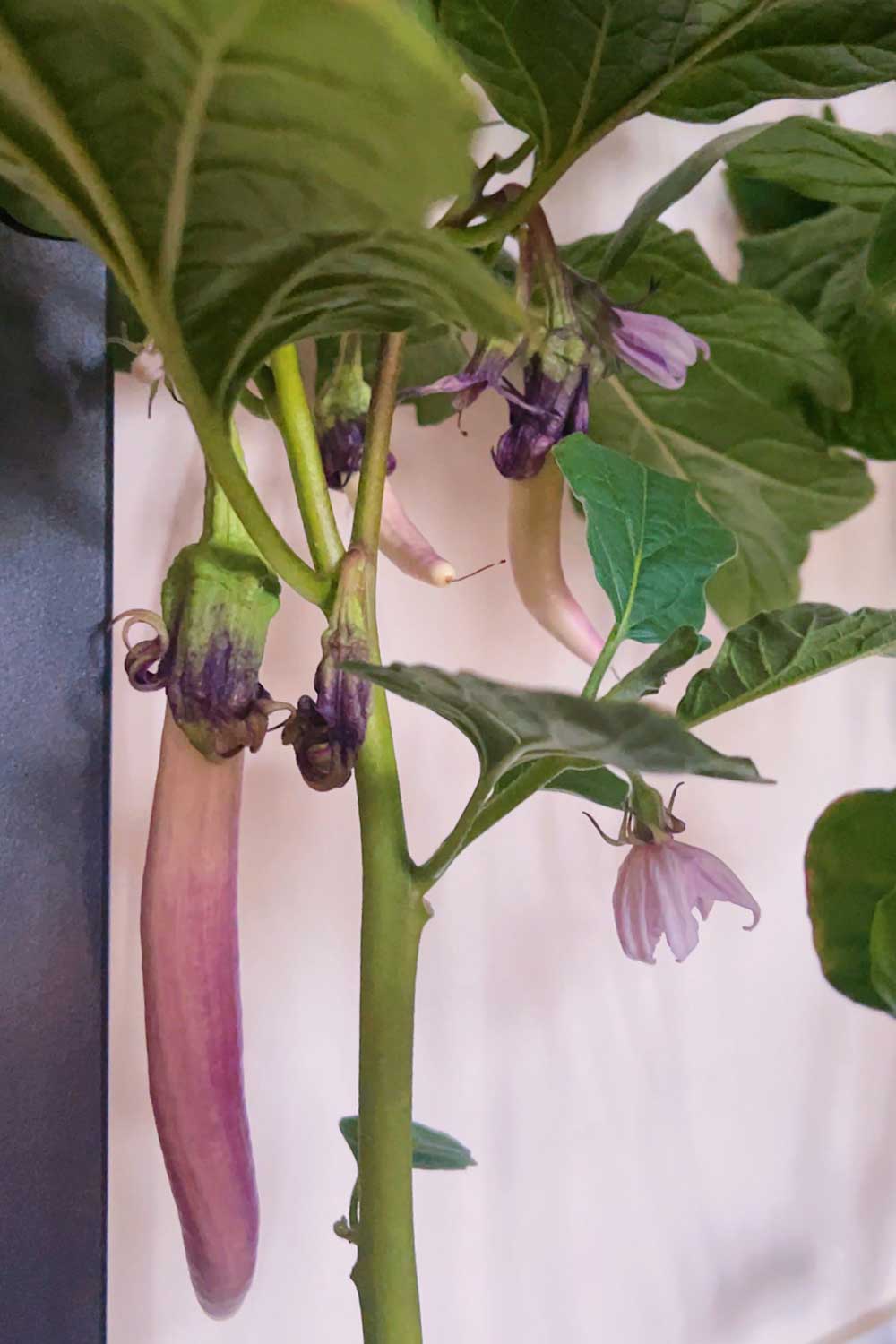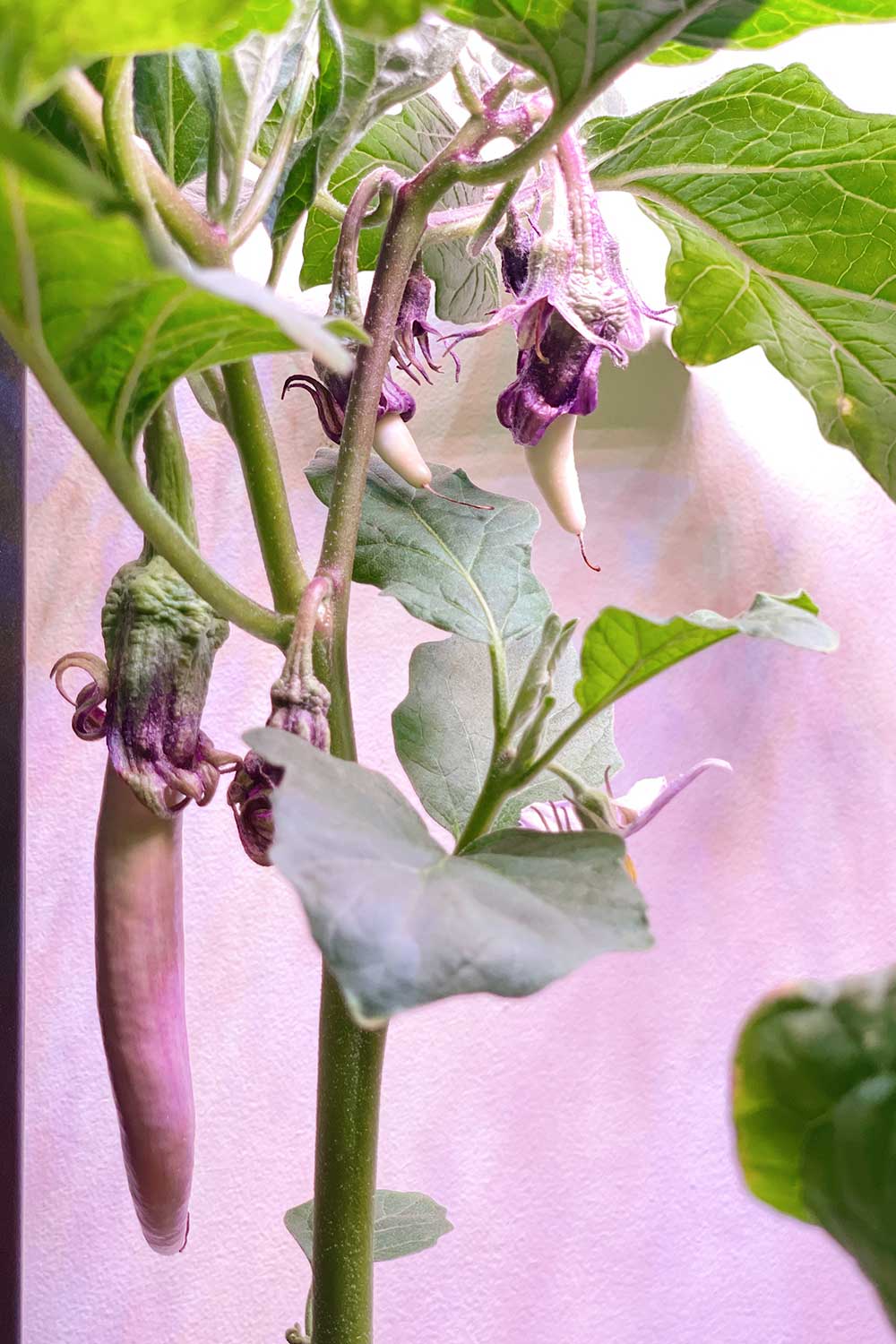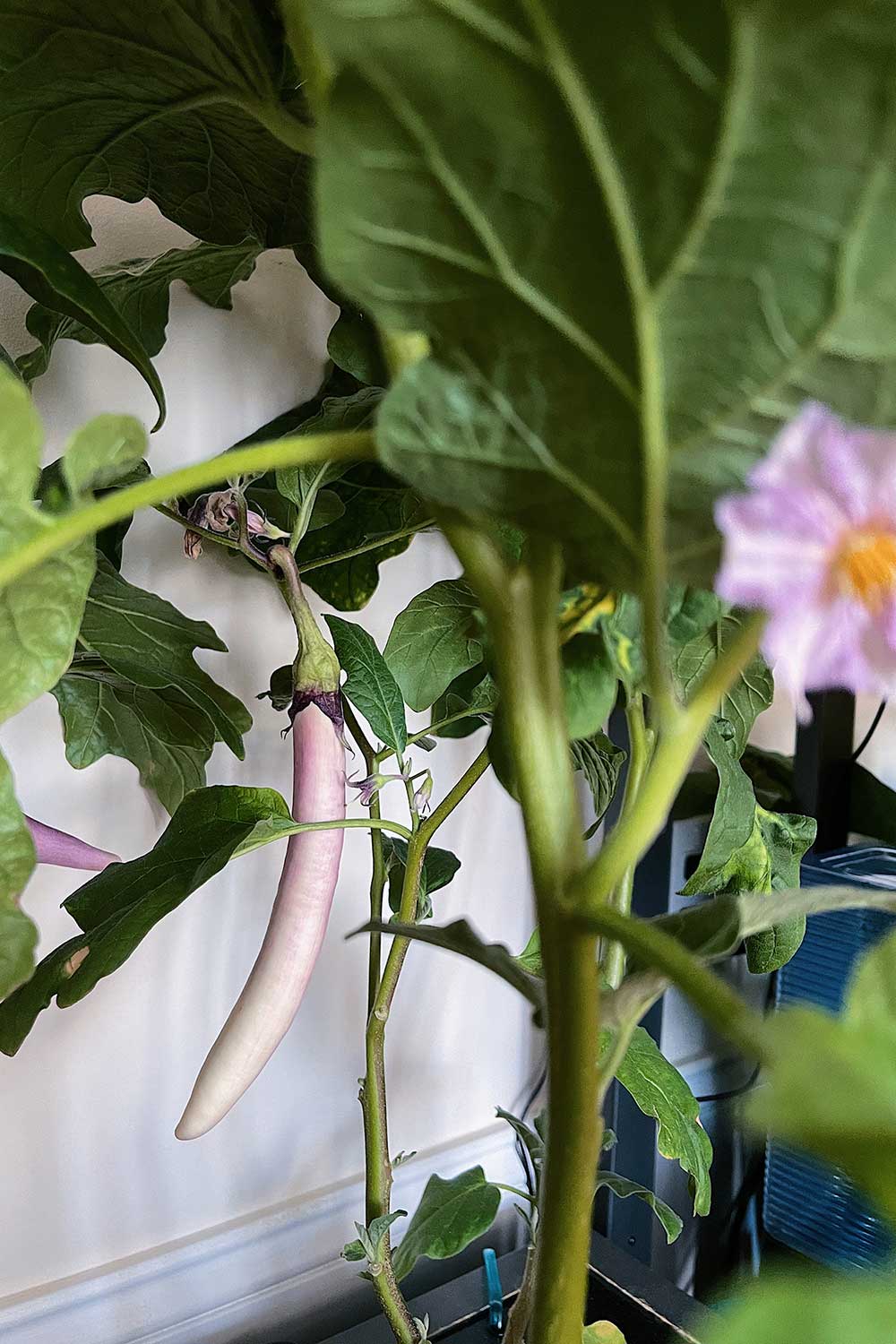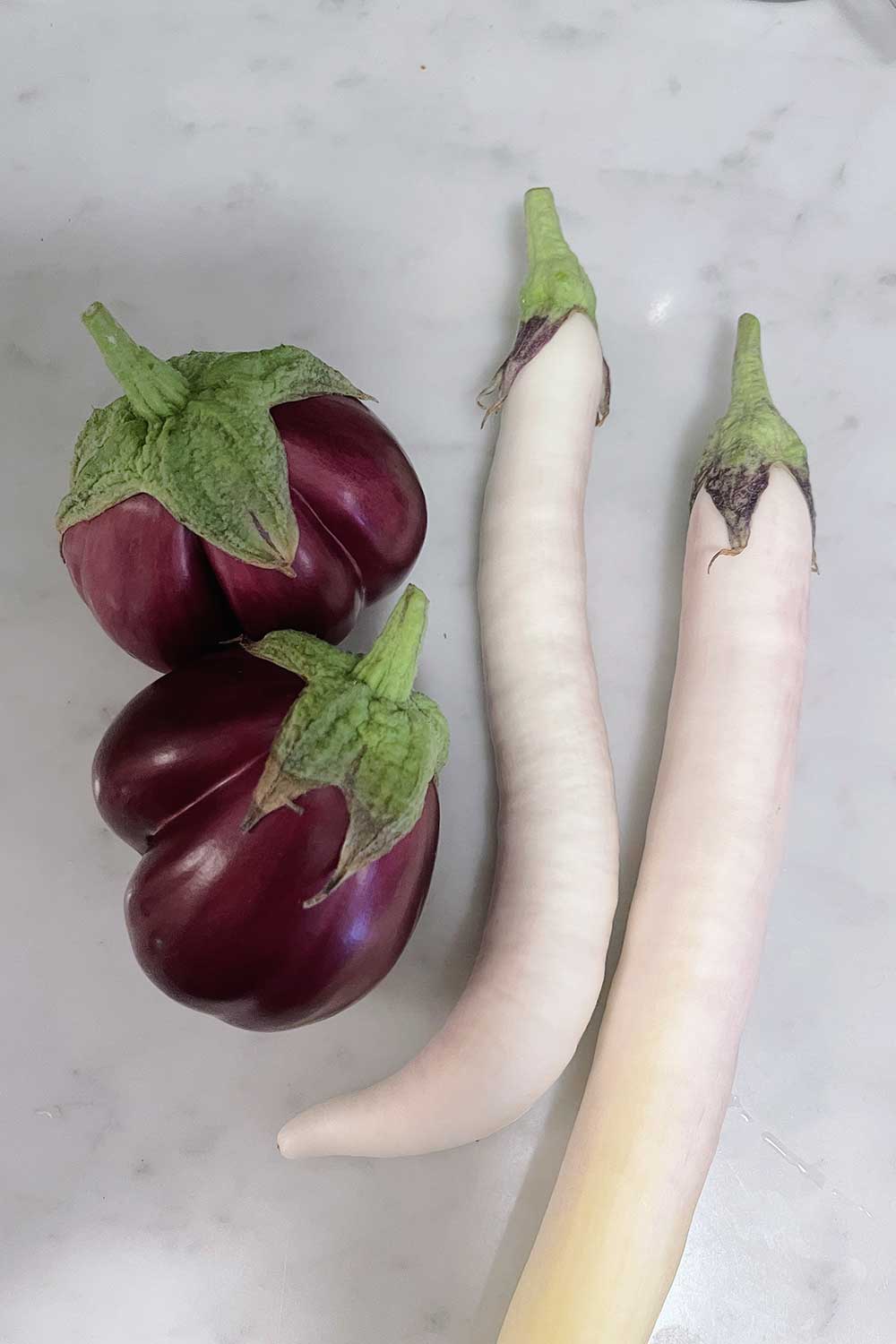Chinese eggplants are an easy, tasty Asian vegetable to grow. Here’s everything you need to know about growing chinese eggplants indoors!
Chinese Eggplant
I never really liked eating eggplants – they can easily taste kind of bland and mushy.
But then I discovered Asian eggplant varieties and I realized I was missing out on a great tasting vegetable!
Asian eggplants tend to be smaller than American or Italian varieties. They also have thinner skins and fewer seeds, so they taste sweeter and more tender.
So if you’ve never really liked regular eggplant, don’t write off the entire category – just try Asian eggplants!
Eggplants belong to the nightshade family (along with tomatoes, peppers and potatoes) so they love sun and heat, and can’t survive a frost.
Compared to tomatoes and peppers, I found eggplants very easy to grow.
Chinese eggplants in particular are some of the oldest varieties of eggplants. They tend to be elongated, deep purple eggplants that do well in stir-frys.
They’re quick, heavy producers and can be planted indoors or outdoors, as well as grown hydroponically!
Here’s everything I’ve learned about growing Chinese eggplants.
Keep reading, or pin this article to save it for later ⇟
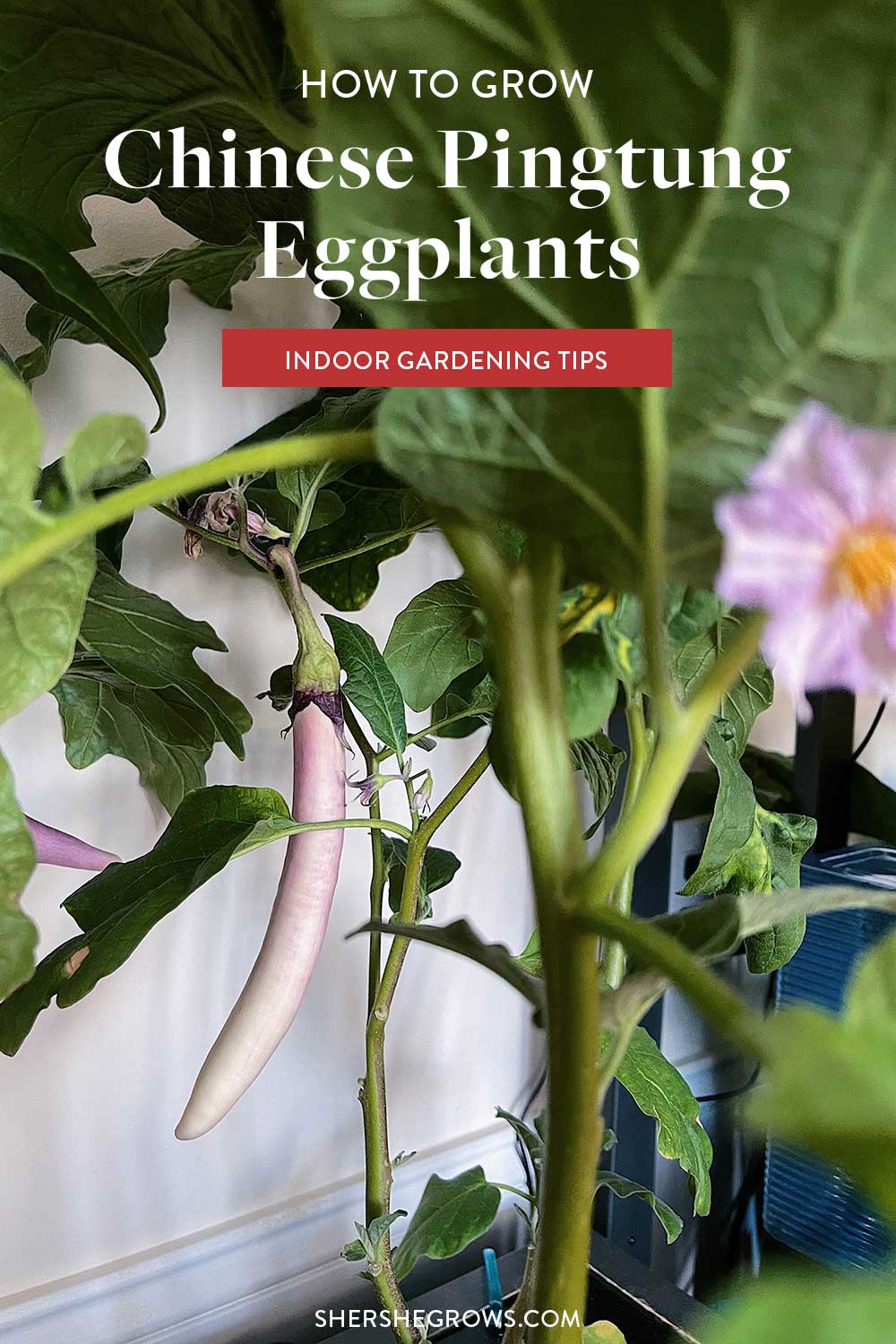
Eggplants are believed to have originated in India. Their name came from Europeans who traveled to the East and saw white egg-shaped orbs growing in the ground. In China, the earliest written records of eggplants date back to 59 BC. A Han Dynasty poet named Wang Bao referenced eggplants being grown in his work Tong Yue, writing, “In the second month of the year, the Spring Equinox … separate and transplant seedlings of eggplant and scallion.” Similar to ancient Indian eggplants, these early Chinese eggplants were small, round fruits (but green in color). Chinese records document how agronomists worked hard to selectively breed eggplants into a tastier domestic variety. Chinese farmers focused specifically on taste and in the process, changed the small green orbs into larger, long-necked purple shapes. Perhaps that’s why Chinese eggplants today don’t have the typical bitterness found in American or Italian varieties! There’s tons of Chinese eggplant varieties. Most are deep purple, but some are blue, white or black skinned. Some of the most popular Chinese eggplant varieties include: If you’re new to growing Chinese eggplants, I recommend ping tung eggplants (also known as string eggplants). Their name derives from their place of origin: Pingtung, Taiwan. This Taiwanese variety is the quintessential Chinese eggplant for several reasons. It’s highly productive, very hardy and relatively disease resistant. In particular, it’s a fan favorite for the way it tastes. The flesh turns creamy and sweet when cooked, never bitter! (I also simultaneously grew a cute small, plump purple ribbed Thai eggplant – grow guide on that cultivar here.) If you’re looking to buy Asian vegetable seeds, check out True Leaf Market. They sell heirloom, non GMO seeds for all sorts of hard-to-find Asian herbs and veggies! Buy seeds: Amazon, True Leaf Market, Botanical Interests 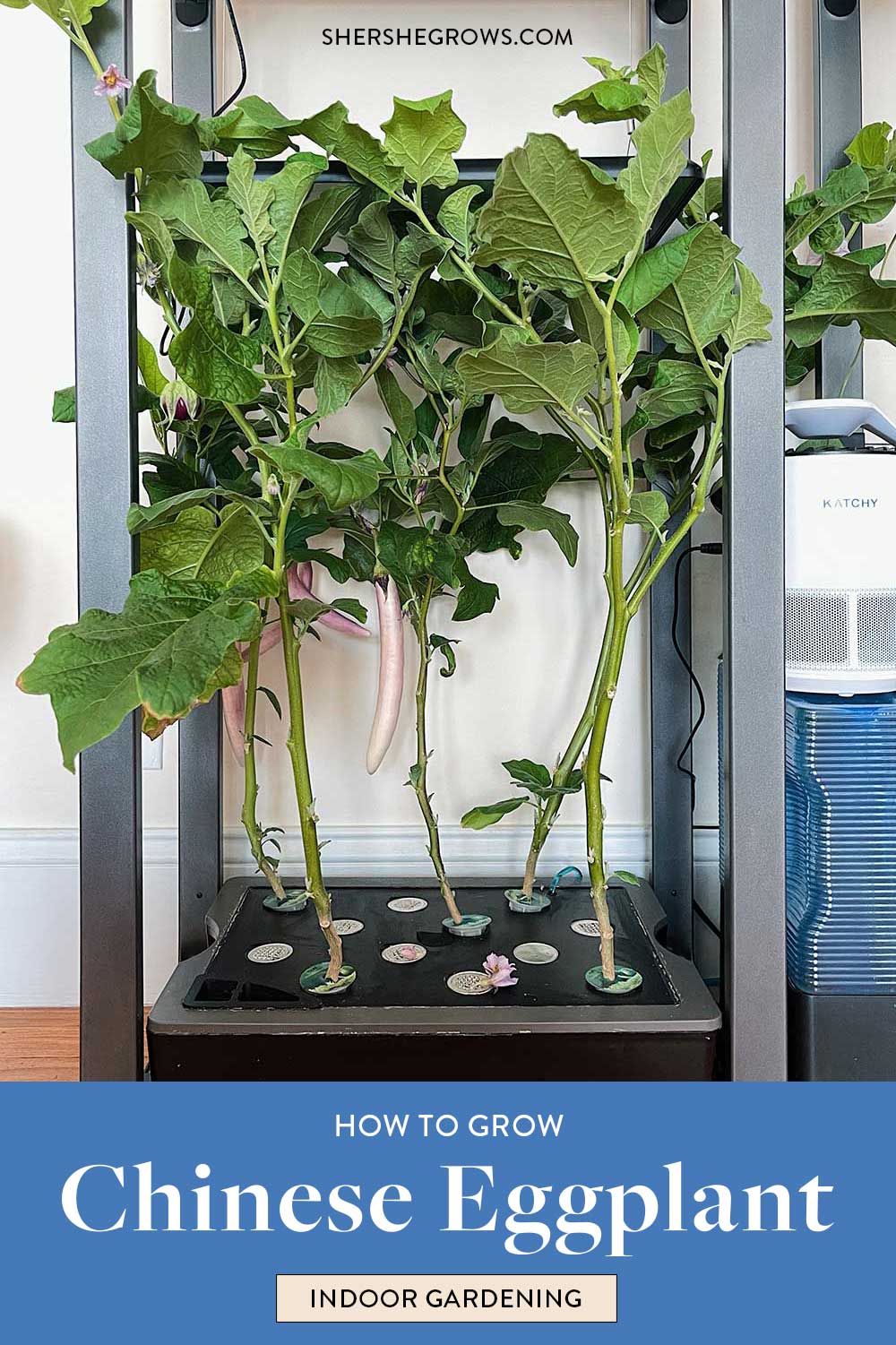
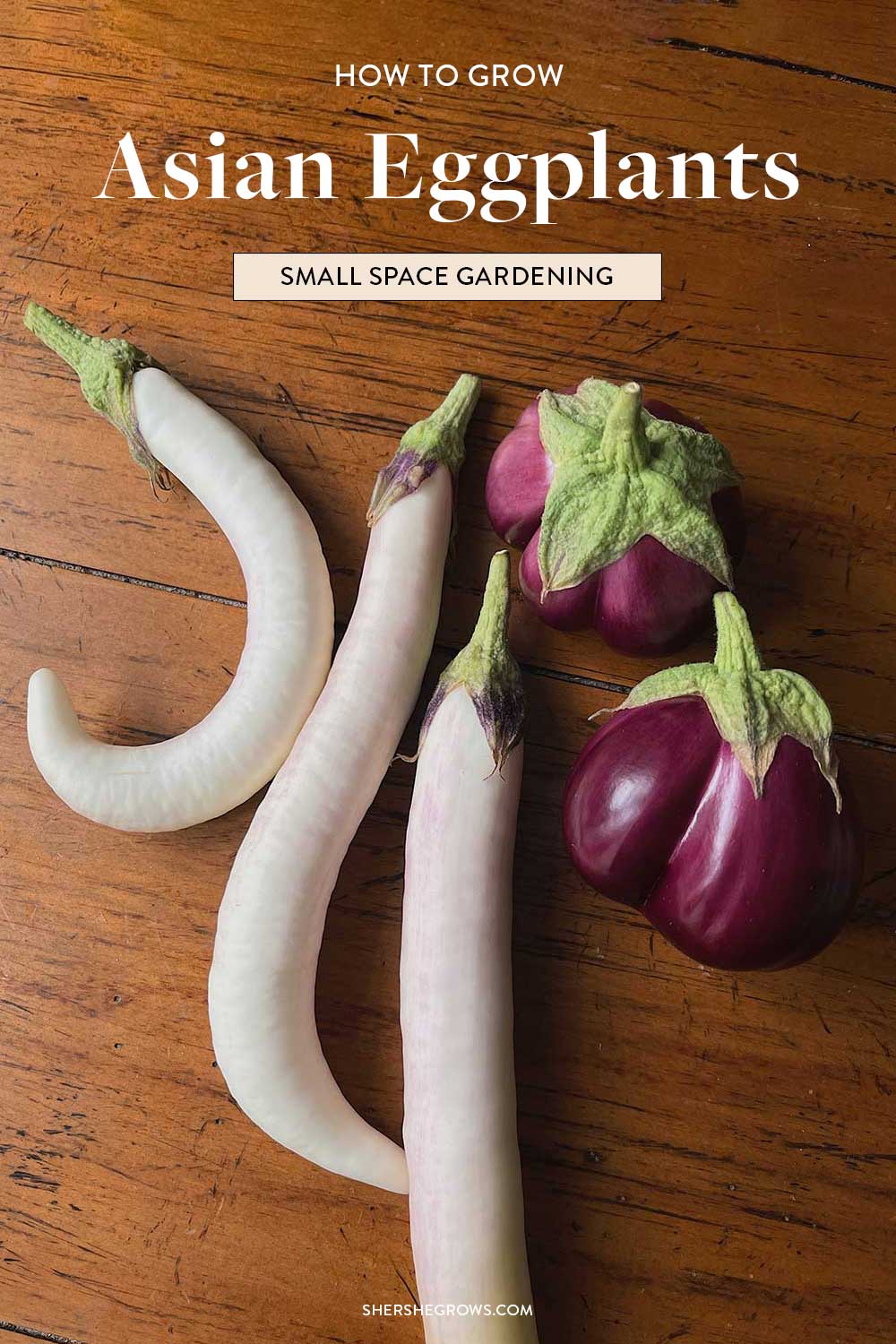
Chinese Eggplants
Types of Chinese Eggplants
Chinese Pingtung Eggplant
Planting Chinese Eggplants
Eggplants like fertile, well draining soil and full sun.
Start seeds indoors 8-12 weeks before the last frost date. A heat mat helps to warm soil and speed up germination.
Wait to transplant until the seedlings have grown larger, and sow around 18″ apart. Chinese eggplants produce fruit relatively quickly, around 50-65 days after transplant!
Some eggplant varieties will require staking.
Make sure to harvest fruit regularly to promote new flowers and continuous fruit production.
Chinese Eggplant Grow Guide
| Botanical Name | Solanum melongena |
| Common Name | Chinese eggplant, Chinese string eggplant, string eggplant |
| Mature Size | 10-15 inches tall |
| Days to Harvest | 50-65 days from seed |
| Light | Full sun |
| Soil Type | Rich, well draining soil |
| Soil pH | Neutral (6.2 – 6.8) |
| Hardiness Zones | USA Zones 2-10 |
| Native Area | Asia |
| Pests | aphids, flea beetles, caterpillars, spider mites |
| Diseases | blight, mosaic varieties, fungal diseases, powdery mildew |
Growing Hydroponic Chinese Eggplants Indoors
I grow everything indoors inside my small NYC apartment so I’m always searching for compact vegetable varieties.
So far, out of all the eggplant varieties that I’ve grown, I’ve found the Chinese string eggplant to be the most compact and the most productive.
The plants can easily stay under 3 feet in height and produce a cluster of 10 – 15 inch long fruits. I planted 2 in my Aerogarden Farm and they really thrived!
Pollinating takes a bit of manual effort, but each plant quickly produced several string eggplants and they also matured quite quickly!
You can eat the baby fruit whole, like large chunky green beans, or slice up the mature eggplants to grill, sauté and stir fry.
growing Chinese eggplants in a smart garden is very hands off + easy – try the Farm XL which has a 3 ft grow height capacity
If you’re growing outdoors, keep in mind that eggplants need warm soil and hot weather, so don’t put them in the ground too early.
If anything, it’s best to transplant later rather than earlier. Eggplants love heat and humidity and really thrive in the summer.
My apartment is on the warm side, and I could tell the eggplants absolutely loved the heat! They’ll put on a lot more leaf growth and flowers once temperatures rise.
But of course – within reason.
Once temperatures exceed 95°F, it can stress the plant and cause it to drop flowers.
Best Indoor Gardening Products to Grow Eggplants
Indoor Gardens
Use Your Own Seeds
Aerogarden Discount Code
Use SSG15 for 15% off any order of $50+
How to Grow Chinese Eggplants
A video grow guide covering everything you need to know about Chinese eggplants, from seed to harvest!
https://youtu.be/CIxepFFiA9Q
How Long Does It Take to Grow Chinese Eggplants?
On average, Chinese eggplants take 50 to 65 days to mature from transplanting, depending on the variety.
I started my seeds in early July, and grew them entirely from start to finish in my indoor hydroponic garden, the Aerogarden Farm 24xl.
The smart garden has a vertical height capacity of 3 feet, which is ideal for larger fruiting plants like eggplant.
By early August, the first flowers started to appear, by mid-August baby eggplants began to form and I started harvesting them in mid September.
My Chinese eggplants have continued to produce flowers and fruits and I’m hoping to have eggplants all year long!
chinese eggplants in various stages of maturity
Do Chinese Eggplants Need a Trellis?
From my experience, Chinese string eggplants are sturdy, compact plants. I didn’t need to trellis mine!
How to Harvest Chinese Eggplants
Harvest eggplants when the skin looks shiny and glossy and the flesh is plump, with a slight give.
Don’t wait too long to harvest!
Generally, the smaller, the better because the flesh will be tastier and more tender. Once the fruit reaches maturity, the inside flesh will have lots of seeds and start to develop a bitter taste.
To harvest, I recommend using kitchen shears.
The plant stem is pretty firmly attached to the plant, so yanking it will often cause damage to the whole plant. It’s much better to cut!
Some eggplant varieties can have little thorns at the top of the fruit. So cut the stem at the very top, closest to the plant’s main branch.
@shershegrows Eggplant harvest pt 2! 🥹 almost too cute to eat #indoorgarden #harvestingeggplants #harvestasmr #gardeningindoors #gardenasmr #aerogarden #indoorgardentok
harvesting chinese eggplants!
more hydroponics + recipes on tiktok @shershegrows
How to Store Eggplants
It’s best to eat eggplants within 1 to 2 days of harvest. If you do that, you can keep them on your kitchen counter.
Otherwise, you should definitely store them in the fridge, in the crisper drawer.
Place the eggplants in a plastic bag to keep them as fresh as possible and use them within 1 week.
How to Cook Chinese Eggplants
Chinese eggplants are typically slender and long.
They look much different from the fat dark eggplants you typically find at the grocery store, like American Black Beauty!
Chinese eggplants have thin skin and fewer, smaller seeds. It makes them really easy to cook and quite tasty, and there’s no need to peel them.
For more ways on incorporating asian eggplants and cooking Japanese dishes, take this Masterclass on Modern Japanese Cooking!
Chinese and Japanese eggplants are very similar, so you can substitute one for the other.
The only main difference is in the color – Japanese eggplants tend to be a dark, deep purple while Chinese eggplants are usually a more pale purple.
Read more: Chinese Eggplants in Garlic Sauce Recipe
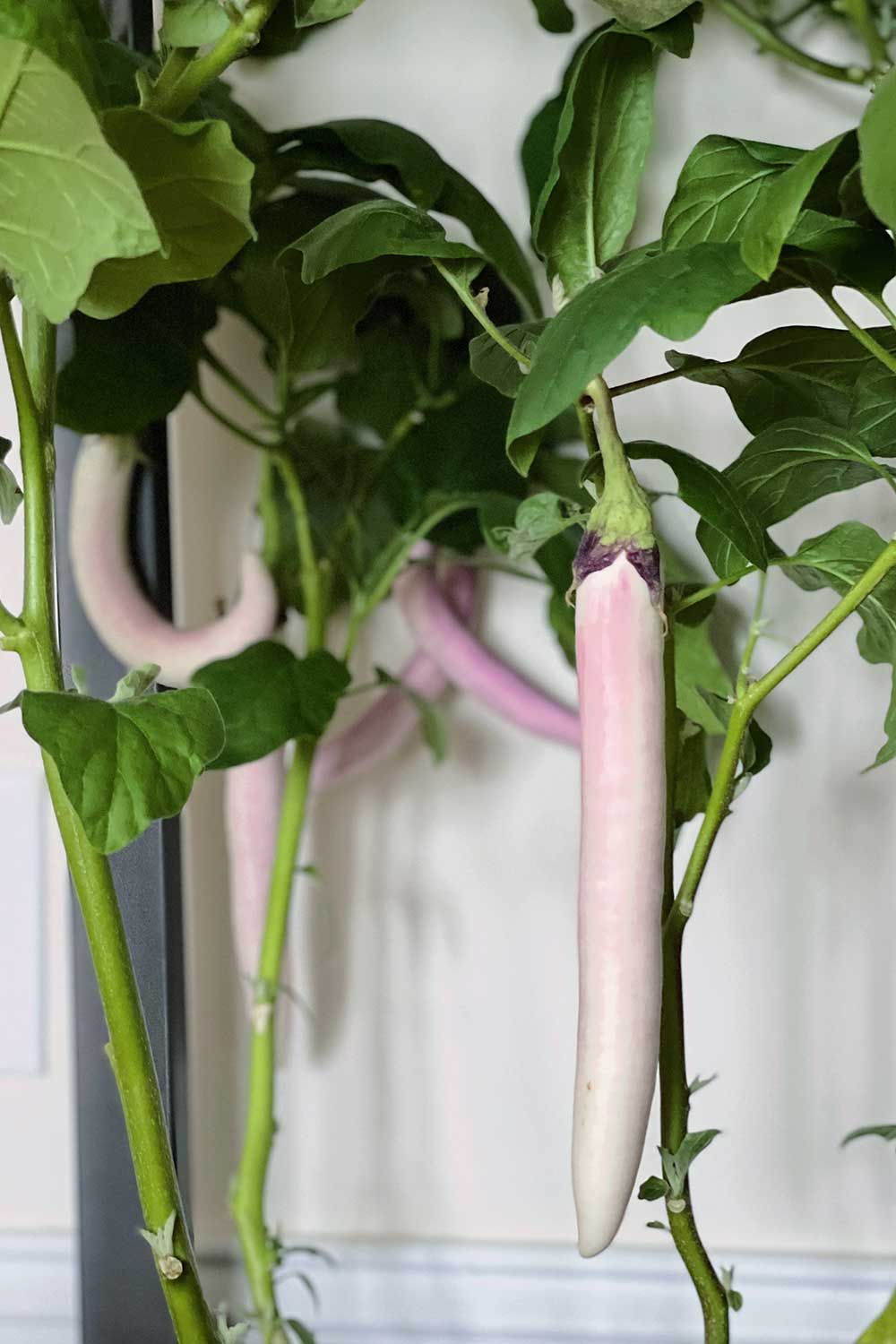
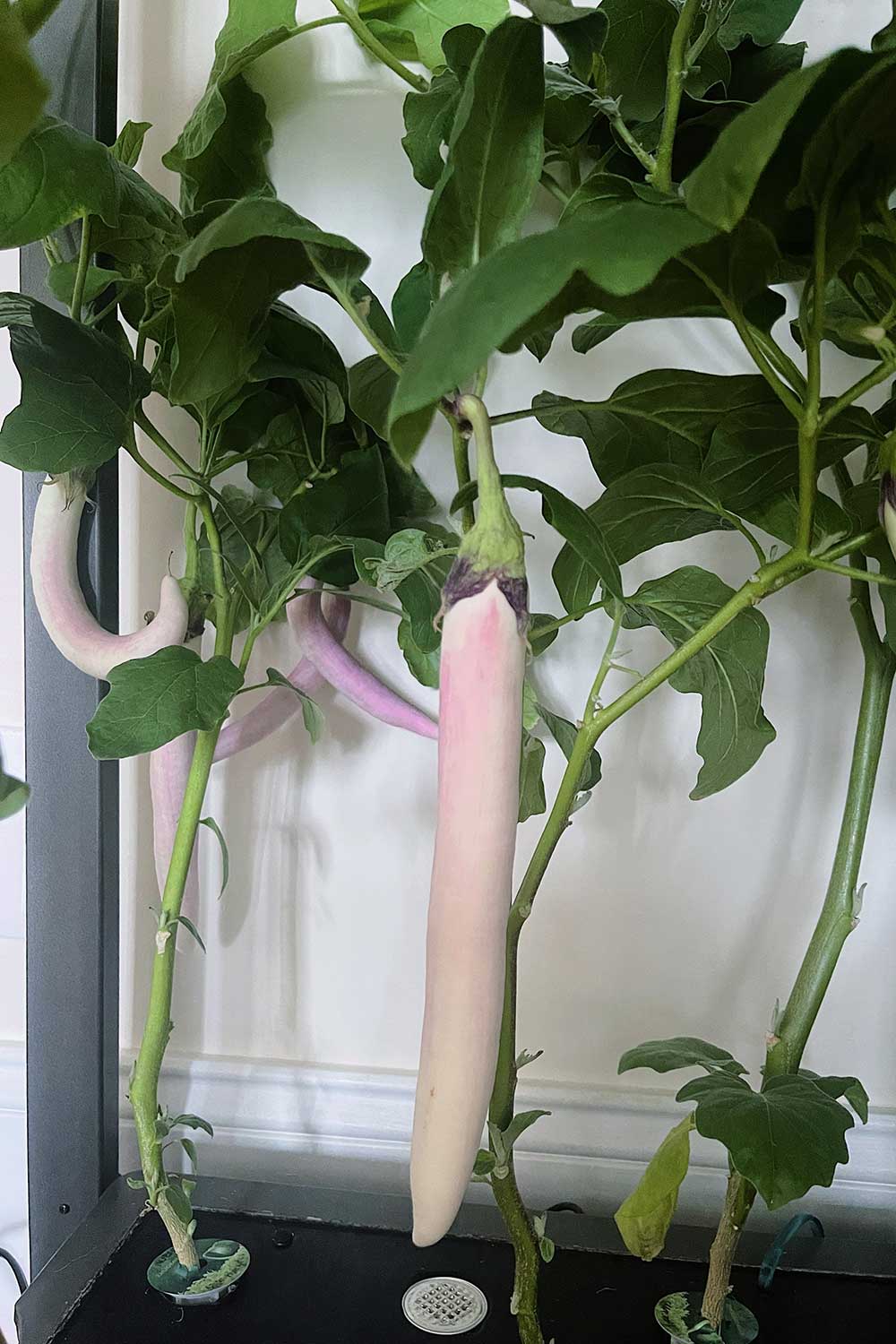
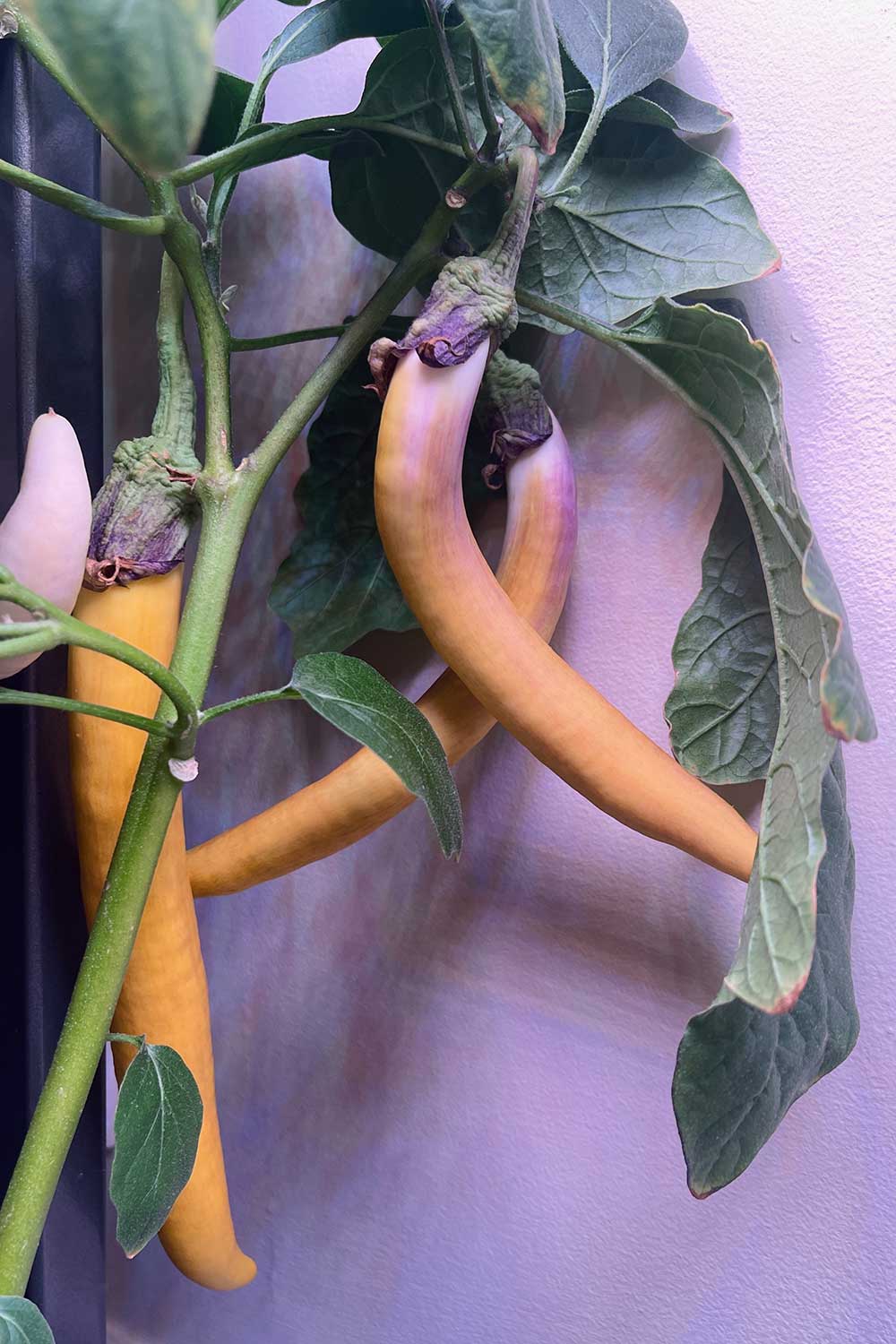
don’t wait too long to harvest!
from left to right: young white eggplants, string eggplants at peak maturity and overripe (yellow)
Chinese Eggplant Recipes
Follow me on
